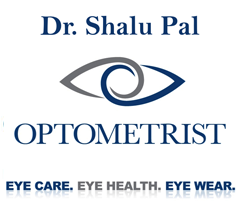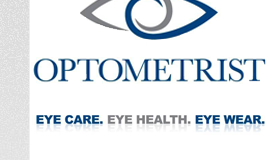Most commonly called "pinkeye," conjunctivitis is often seen by eyecare practitioners; it is the most common medical reason people come in to see their eye doctors. The conjunctiva is the clear membrane that covers the whites of the eyes. It begins at the edges of the cornea, (the clear, curved structure that covers the iris) and continues into the folds of the eyelids, then lines the inside surfaces of the eyelids.
Conjunctivitis is an inflammation of the conjunctiva that causes redness, itching or burning and excess tearing. It is vulnerable to inflammation or infection because it, along with the cornea, is the first surface of the eye, and part of its function is to serve as the first line of defense for the eye.
Normally, the tiny blood vessels in the conjunctiva are almost invisible so we don’t notice them, but when the eye is inflamed or infected they swell up and make the white of the eye appear pinkish. The term "pinkeye," however, says nothing about the underlying cause of the redness.
In many cases, the conjunctivitis may be combined with inflammation of the cornea as well, which is known as keratoconjunctivitis. Because the cornea is involved, these are more serious and require more aggressive treatment strategies.
There are various types of conjunctivitis, including allergies, infections by viruses, bacteria or funguses, and dry eye syndrome. Determination of the underlying cause will determine how it is treated.
Acute versus Chronic
A pink or red eye that appears for unknown reasons, without warning, is considered to be acute conjunctivitis. If the situation recurs, especially more than once, it may be reclassified as chronic conjunctivitis. In chronic conjunctivitis the cause is usually underlying systemic disease or certain prescription medications. Chronic cases can also be caused by allergies.
Allergies
Allergic conjunctivitis will be in both eyes, and the first complaint will be itching; in fact, to an eye doctor, itching means allergy until proven otherwise. In addition, there may be a buildup of thick strands of mucus, and the conjunctiva inside the eyelids will be involved as well.
Along with environmental factors like dust, pollen or animal dander, a common source of ocular allergies is contact lens solution, especially those used with soft lenses. Allergic conjunctivitis may be seasonal or year-round.
While not usually serious, ocular allergies can be quite uncomfortable and the discharge causes the vision to blur. If left untreated, they may become chronic.
The first line of treatment for allergic conjunctivitis is to try to eliminate the specific thing triggering the allergy, by changing contact lens solution, for example. This is not always easy or even possible, however, so the next strategy is usually eye drops containing antihistamines, sometimes combined with an oral allergy medication.
Allergies are not infections and are not treated with antibiotics either in the form of eyedrops or oral medications; however, in severe cases, topical steroid eye drops will help suppress the inflammatory response initially. Steroids are not usually recommended for long term use.
Infection
In the early stages, an ocular infection is usually present in only one eye, and cause more severe redness, especially if it is a bacterial infection rather than one caused by a virus.
Bacteria and viruses can be introduced into the eye on floating particles in the air, or by hitching a ride on our own contaminated hands when we rub our eyes. This is actually one of the main ways we contract cold or flu viruses, because the eyes drain into the nasal cavities and into the back of the throat. The viruses float in the tears like driftwood in a river, then attach themselves to the first available surface and begin to multiply.
Viral infections are usually accompanied by moderate redness and watery discharge. They are usually self-limiting, like colds, so will eventually clear up without treatment, but we can treat the symptoms with medications and cool compresses to help shrink swollen tissue and blood vessels.
Bacterial infections can be much more serious, causing severe redness and thick or ropey discharge with either a white or yellowish color. These infections can be treated with antibiotic drops, or systemic antibiotics in more severe cases. The ocular tissues will not only be swollen or red, but usually also feel hot, so cool compresses can be used as part of a treatment strategy, although care must be taken to avoid transferring the infection to the fellow eye.
Dry Eye Syndrome
Conjunctivitis due to dryness will be present in both eyes and can cause not only redness but discomfort. The sensation of dryness can actually trigger the eye to produce more tears, but the extra tears don’t help in the long run because they disrupt the balance of the tear film, which causes even more symptoms.
Underlying causes of dry eyes can be systemic disease, environmental factors like smoke or by certain medications.
Dry eyes may be acute in nature, but can become chronic if the underlying cause cannot be determined.
Treatment of dry eyes includes ocular lubricants, in the form of eye drops and ointment, changing medications, or the insertion of punctal plugs to decrease the tear flow out of the eye. Which treatment or combination of treatments will be most effective depends on the severity of the problem and the underlying causes.
Summary
It is important to see an eyecare practitioner whenever there is any redness or discharge from the eyes, to determine the cause and treatment.
Help prevent conjunctivitis by following the usual rules: wash your hands frequently and avoid rubbing them. Remove all eye makeup each evening, and replace eyeliner and mascara frequently.
Infectious conjunctivitis is contagious, so children should stay at home until an eyecare practitioner is satisfied that the infective period is over. Adults with conjunctivitis should be very careful not to transfer bacteria or viruses to surfaces that others may touch, such as telephones or computer keypads.
Conjunctivitis can become chronic if the underlying causes are not determined or if the underlying causes are not treated.
Allergic conjunctivitis symptoms:
- Itching
- Moderate to severe redness
- Both eyes
- Treatment with antihistamine drops or oral medications
Infectious conjunctivitis symptoms:
- Usually begins in one eye, can transfer to involve both
- Moderate to severe redness and swelling
- Watery or ropey discharge
- May feel hot
Dry Eye Conjunctivitis
- Dryness may trigger excess tearing
- Moderate redness, mild swelling
- Determination of underlying cause determines treatment






